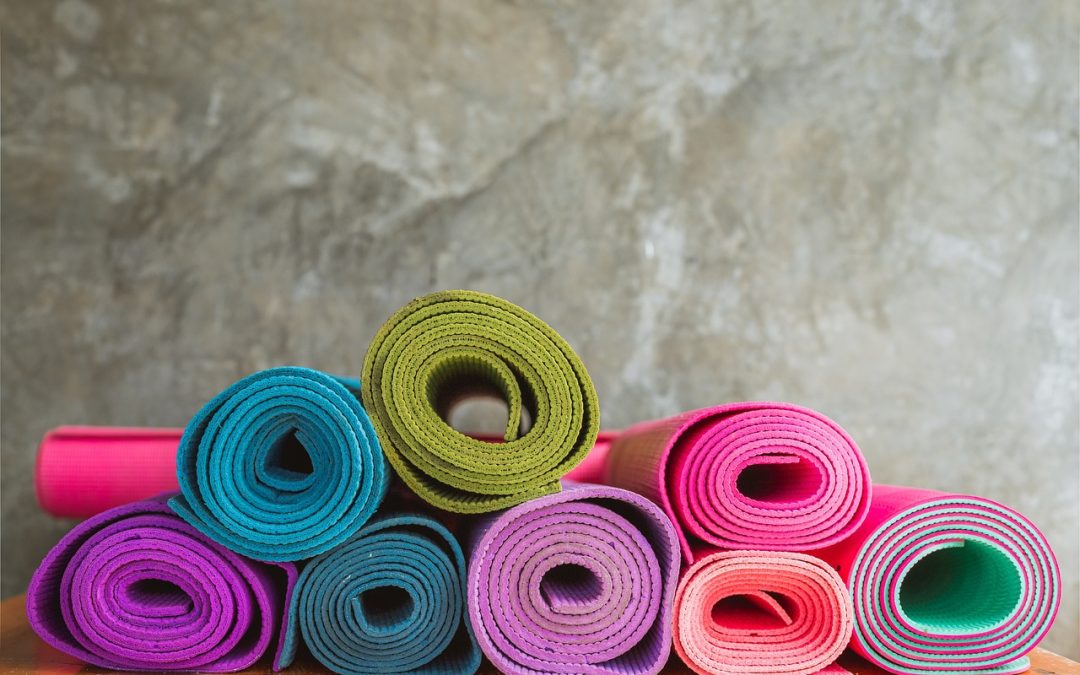Moving to a new home is an exciting adventure, but the process of relocating can also bring about stress. To ensure a smooth transition, it’s essential to start early and get organized. By separating items you no longer need, donating them, and packing room by room with marked boxes, you can alleviate the pressure of moving. Don’t hesitate to ask for help from friends or family who can assist with packing and unpacking. Furthermore, keeping essential items like documents and valuables together and easily accessible will help the moving day flow seamlessly.
Starting Early: Preventing Moving Stress
Begin With Organization
Organization is key to reducing stress during a move. Start by creating a detailed timeline for your move, setting specific dates for when different tasks should be completed. This could include decluttering deadlines, packing start dates, and utility service switches. Compile a list of all the tasks you need to complete and prioritize them. Having a clear plan will help you focus on one thing at a time and prevent last-minute rushes.
Next, assemble all the supplies you’ll need, like boxes, tape, and markers, well in advance. Consider investing in color-coded labels or stickers to assign a color to each room, making it easier to sort boxes later. Create a central document, whether digital or physical, that tracks everything from your moving checklist to receipts for moving expenses. Staying organized from the start sets a calm tone for the entire moving process.
Item Separation: Donation vs Essentials
Distinguishing between what to donate and what to keep is a crucial step in preparing for a move. Go through your belongings with a critical eye, and be honest about what you use regularly. Items that haven’t been used in over a year are prime candidates for donation. This not only lightens your load but also benefits those in need.
Set up boxes or bags labeled ‘Donate’ in each room to make the process systematic. As you decide on items to give away, place them in these containers. On the other hand, identify the essentials that you’ll need up to the day of the move and shortly after. These should be packed separately and be the last to go onto the moving truck. By separating your items early, you can avoid the chaos of sifting through boxes for essentials after the move.
Single-Room Packing: The Efficient Approach
Tackling one room at a time is a highly efficient packing strategy. This approach allows you to focus your efforts and avoid the overwhelm that comes with seeing your entire living space in disarray. Begin with the rooms you use the least, such as guest rooms or storage areas. These spaces often contain items that are infrequently used, making them ideal starting points.
As you pack each room, create an inventory list to track your belongings. This can be as simple as a notebook or a digital spreadsheet. Detail what’s in each box, and number the boxes to correspond with your list. This will be immensely helpful when unpacking or if you need to find something quickly. By compartmentalizing the packing process room by room, you maintain order and progress methodically towards your moving day without unnecessary stress.
Calling For Backup: Asking For Help
Don’t underestimate the power of extra hands when it comes to moving. Asking for help can significantly lighten your workload and alleviate stress. Reach out to friends and family members early in the process to schedule their assistance. People often want to help but may need advance notice to fit it into their schedules.
When your helpers arrive, be prepared with specific tasks to assign to them. This could be anything from packing boxes to disassembling furniture. To keep morale high and show your appreciation, plan for breaks with refreshments or even offer a small thank you gift. Remember, the goal is not just to get help with the physical labor but also to make the moving process a more enjoyable and communal experience. Having others to share the load can turn a typically strenuous day into a memorable and productive one.
Efficient Packing: Stress-Free Moving Strategies
Room-By-Room Organization
Approaching packing with a room-by-room strategy is not only efficient; it’s essential for maintaining order. Start by categorizing items in each room and then packing them together. For example, keep all kitchen utensils in the same set of boxes and all bedroom linens in another. This method ensures that when you arrive at your new home, setting up each room will be more streamlined.
Utilize a checklist for each room to ensure nothing gets missed. As you pack, cross off items from your list, giving you a visual sense of accomplishment and progress. This approach can also help you identify any additional storage or organizational tools you might need for your new space. By maintaining room-by-room organization, you will be able to unpack and settle into your new home more quickly and with far less frustration.
Protective Packing: Quality Materials
Using quality packing materials is crucial for protecting your belongings during a move. Invest in sturdy boxes that can hold the weight of your items without breaking. Use bubble wrap, packing peanuts, or even towels and blankets to cushion delicate items. Specialty boxes for dishes and wardrobe boxes for clothes can also make packing more efficient and your items more secure.
Don’t skimp on tape—reinforce the bottom of boxes, especially those carrying heavier loads, to prevent any unfortunate accidents. For electronics and furniture, consider shrink wrap to prevent scratches and dust accumulation. Remember, the goal of using quality packing materials is not only to protect your items from damage but also to give you peace of mind. Knowing your belongings are safely packed allows you to focus on the other aspects of your move without worry.
The Importance of Box Labeling
Labeling your boxes is a step that should not be overlooked. It is a simple task that yields significant benefits during both packing and unpacking. Clearly write the contents of each box and the room it belongs to on the top and at least one side. Use a permanent marker for visibility, and consider using different colored markers for different rooms to further streamline the process.
Additionally, it’s helpful to note if the contents are fragile or if the box should be loaded last so it can be unloaded first. Labels that clearly say “Open First” can identify essential items that you’ll need immediately upon arriving at your new home. By properly labeling your boxes, you reduce the risk of misplacement and make it easier for movers or helpers to place boxes in the correct rooms, saving you time and effort in the long run.
Packing the Essentials: What to Keep Accessible
When packing for a move, it’s important to set aside a box or suitcase for essentials that you’ll need on moving day and the first few days after. This should include items like toiletries, medications, a change of clothes, important documents, chargers, and basic tools. Think of it as a travel kit that will keep you comfortable if the rest of your belongings are temporarily out of reach.
Label this box or suitcase clearly and keep it in a designated spot so it doesn’t get loaded onto the moving truck by mistake. If you’re moving with family, each member should pack their own essentials bag. For children, include a favorite toy or book to give them a sense of familiarity among the chaos. By keeping these essentials accessible, you’ll avoid the stress of searching through numerous boxes for items you need immediately upon arrival at your new home.
Fragile Items: Packing With Care
Packing fragile items requires extra attention and care. Start by choosing the right size boxes; overly large boxes can lead to items shifting and potentially breaking. Wrap each fragile piece individually in bubble wrap or packing paper, making sure that there are no loose ends. For added protection, you can fill any gaps within the box with additional padding.
Plates should be packed vertically, as if in a dish rack, to reduce the risk of breakage. Glasses and stemware can be protected with cardboard dividers, and it’s a good idea to fill hollow items, like vases, with packing material to reinforce them from the inside. Once the box is packed, seal it securely and label it with ‘Fragile’ on multiple sides. Always stack these boxes at the top when loading the moving truck and avoid placing heavy items on top of them. By taking these precautions, you can ensure your delicate items arrive intact.
The Benefit of Hiring Professionals
Hiring professional movers can be a game-changer for a stress-free moving experience. Professionals are equipped with the right tools and expertise to handle heavy furniture and delicate items. They can efficiently pack, load, transport, and unpack your belongings, which can save you significant time and effort.
Another key benefit is the safety aspect. Professional movers are trained to navigate challenging scenarios, such as narrow staircases or large items, reducing the risk of personal injury or damage to your property. Moreover, many moving companies offer insurance options to protect your belongings during the move, providing an additional layer of security.
While there is a cost associated with hiring professionals, the investment often justifies the convenience and peace of mind they provide. For those with busy schedules or those who simply want to ensure their items are handled with care, professional movers are worth considering.
Smooth Moving Day: Ensuring a Successful Transition
Protecting Your Home: Cardboard and Blankets
On moving day, safeguarding your home’s floors and walls is essential. Heavy foot traffic and bulky items can cause scratches, dents, or dirt buildup. Cardboard sheets are an effective and low-cost option for protecting flooring. Lay them down on high-traffic areas and secure them with tape to prevent slipping.
For stairs and carpeted areas, consider using old blankets or specialized moving blankets. These provide cushioning and protect against soil and wear. Similarly, wrap banisters and sharp corners with padding to shield against nicks and scratches from furniture and boxes.
Remember to also protect the home you’re moving into. Make sure to have these materials on hand when you arrive so that you can set them up before the movers begin unloading. By taking the time to protect your old and new homes, you’ll avoid potential damage and cleaning costs.
Staying Hydrated: Health First
Moving day involves a lot of physical activity, which can take a toll on your body. Staying hydrated is crucial to maintain your energy and health throughout the day. Keep a cooler filled with water bottles easily accessible to everyone helping with the move. If it’s a hot day, consider providing sports drinks to replace electrolytes.
Encourage everyone to take short, frequent breaks to hydrate, especially if they’re doing heavy lifting or working in the sun. Dehydration can lead to fatigue, decreased performance, and even heat-related illnesses, which can derail your moving process. By prioritizing hydration, you’re not only looking after your health but also ensuring that the move goes as smoothly and efficiently as possible.
It’s also a good idea to have small snacks on hand to keep energy levels up throughout the day. Fruits, nuts, or granola bars can be quick and healthy options to keep you going.
Final Walk-Through: Leaving Nothing Behind
Conducting a final walk-through before you close the door on your old home is critical. Once the movers have loaded the truck, take the time to go through each room, check closets, drawers, shelves, and storage areas one last time. It’s easy to overlook items, especially those that blend into the background or are hidden in seldom-used spaces.
In the garage and attic, be thorough as these areas often hold items that are infrequently used and can be forgotten. Don’t forget to check outdoor spaces, sheds, or any other ancillary areas. This is also a good time to ensure that all switches are off, faucets are not dripping, and windows are securely closed.
A final walk-through not only ensures that you have all your belongings but also that the house is left in good condition for the new occupants. It’s a simple step that can prevent the headache of retrieving forgotten items later on.
Important Items: What to Bring With You
On moving day, certain important items should stay with you, not on the moving truck. These include personal documents like passports, birth certificates, financial records, and any immediate paperwork related to your move. Keep these in a secure, easily accessible folder or file.
Also, consider personal electronics such as laptops, tablets, and smartphones, which contain sensitive information and are essential for staying connected. Valuables like jewelry and family heirlooms should also be kept close to prevent loss or damage. Don’t forget any prescription medications, eyeglasses, or contact lenses.
Having these items on hand alleviates concerns about them being misplaced during the move and ensures you have access to important things upon arrival at your new home. A little foresight goes a long way in making your move a smooth transition, giving you one less thing to worry about during this busy time.





